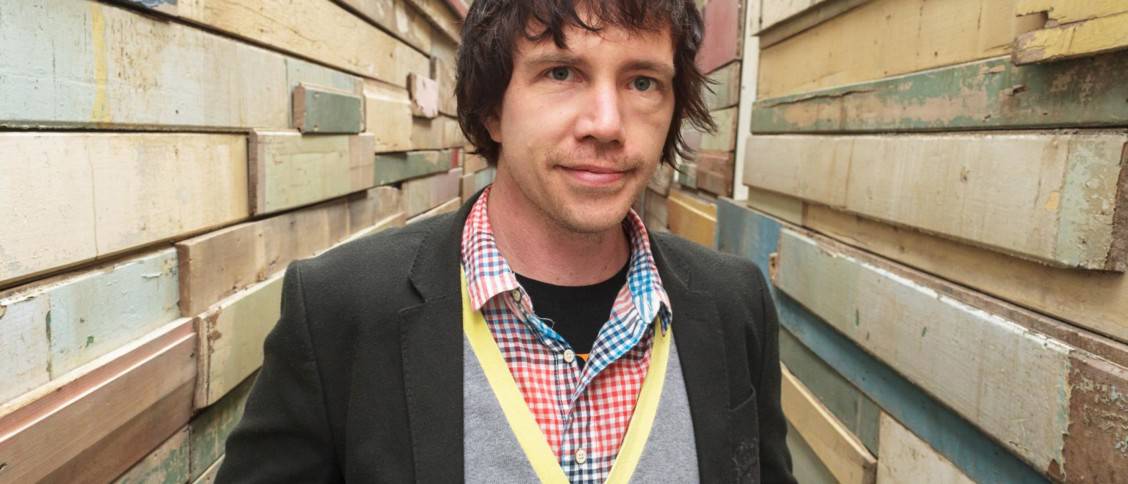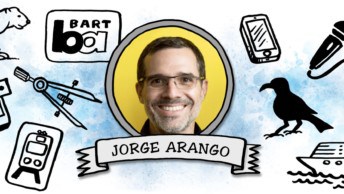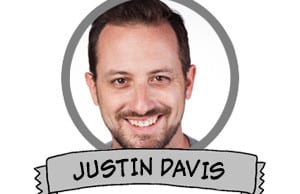Yesterday I had the pleasure of hosting Andrew Mayfield, of Optimal Workshop, in our UXperts chatroom. We were tackling the subject of How to Get Your Website Navigation Right. The calibre of questions was high, and Andrew’s answers were equally impressive. He even pulled out researched statistics on demand!
If you didn’t make the session because you didn’t know about it, make sure you join our community to get updates of upcoming sessions. If you’re interested in seeing what we discussed, or you want to revisit your own questions, you’ll find a full transcript of the chat below.
For details of our next Ask the UXperts session (with Derek Featherstone) check out this thread.
| HAWK | Andrew is CEO of Optimal Workshop, which I assume I don’t need to introduce… |
https://www.optimalworkshop.com/ (just in case) | |
He is also a fellow Kiwi – the first that I’ve hosted in this chatroom, so I’m pretty stoked | |
| Matthew M. | Sweet as! |
| HAWK | So Andrew, I’ll hand over to you now to introduce the topic |
And then we’ll throw it open for questions | |
| Matthew M. | *Actually he’s an Aussie I think |
| Hollie | Kia ora ;) |
| HAWK | (he lives here so I’m taking it) |
| Andrew M. | Hello everyone! |
| Matthew M. | :D |
| Andrew M. | Yes Matt is correct. I was born in Darwin! |
Anyway, today we’re talking about how to get your website navigation right | |
So please jump right in and ask about anything you’d like to know, on or off topic is fine but I’ll try to prioritise the on topic questions, right after the humorous ones. | |
| Ian F. | Andrew, how do I get my website navigation right? |
| Alan | haha |
| Andrew M. | Great question Ian. |
| Alan | Awesome! |
| Andrew M. | As always, “it depends” :) |
So | |
| Rafael | Top vs Side nav….what’s the trend now for web? Same for mobile? |
| Andrew M. | In most cases we’ll find that we’re starting from something. |
Meaning, it’s not often that you have a totally clean slate | |
So a great way to begin is often to start by studying the effectiveness of what you have now | |
rather than to launch directly into making changes | |
| Rafael | Include a Home nav button or is it now assumed? |
| Andrew M. | I’d love to hear a little context from the room about what sorts of projects you’re working on |
| HAWK | I’m working on an integrated WordPress/Discourse (community) site. |
| Jason | We’re considering a complete website rebuild. |
| Rafael | Web app with responsive mobile |
| Jason | (switching from Joomla to WP) |
| maadonna | Right at this minute, I am setting up a treejack test to test a university website :) |
| Andrew M. | Rafael: We’ve actually conducted a study into the need for home links vs using the logo for it |
| Leen C. | Andrew, we want to rework the navigation of our webshop and would like to use the card sorting tool to get an insight on how people think we should categorize our products. Would you recommend to work with our own clients on this or should we also involve an independent online panel. (Sorry if my English is not a 100% perfect, but I’m joining this chat session from Belgium ;-) |
| HAWK | And what was the outcome? I’m also interested. |
| Andrew M. | Someone is looking it up for me right now :) |
| Rebecca T. | Andrew, my organisation has just undergone a website refresh. Completely new content, imagery, functionality and purpose. We went through open and closed card sorts, page mapping, user testing on our own site compared to competitors, and now we have a live site |
| Andrew M. | Rafael: I don’t feel especially qualified to comment on “trends” per se, but with respect to top or side nav, I’d say your best path forward is to prototype something up and test it out with some real people |
| Rebecca T. | What I would like to know is how do I ensure that the navigation is still pertinent? I work in a very agile industry that is experiencing a lot of change, and I am worried that we will end up with a messed up navigation again. |
| Andrew M. | Leen C: If your client has a list of their users and they’re keen to invite them to participate in studies then this will be your best source of data |
I’d actually recommend you begin by running a tree test before the card sort, and test the existing information architecture. | |
This way you’ll go into your card sorting exercise with a good understanding of where the biggest problems lie, and you can focus your card sort accordingly | |
And then, after your card sort, and subsequent redesign or tweaks to the IA, you should run another tree test to confirm that your proposed changes will have a positive impact | |
| HAWK | If you have questions, go for it – I’ll queue them. |
Andrew Mayfield: To bring it back to practical basics, what do you think the most common mistake that people make is? | |
| Steve D. | Doing a tree test – do you just watch where people click and document how they get to the destination you tell them to and see how you can improve that? |
| Andrew M. | Honestly, I think the most common mistake people make is to assume that everyone accessing their website thinks exactly the way they do. I’ve done this a whole lot of times myself. |
| HAWK | Right. That’s pretty much the fundamental issue across the UX board, right? |
| Yvonne B. | Do we still need the Home link? I think we do but would love to hear what you think. |
| Andrew M. | Steve D: I’d call that a ‘user test’ or a usability test. And yes, that would work just great. A tree test is a specific method where you test your labelling and content hierarchy choices without any of the visual design |
| HAWK | Yvonne Berg: Andrew has someone looking up the results of a study that he did into that question, so hang fire :) |
| Rebecca T. | Andrew, can you recommend any tools to use to monitor user actions? |
| Andrew M. | Ok I have those study results now |
| Rebecca T. | I currently use google’s event tracking |
| Andrew M. | We conducted a study to investigate whether the home link is still necessary or whether it’s ok to rely on a link from the logo |
Our study involved using Chalkmark to ask 242 participants to “Return to the home page” | |
Tested using 6 different international sites | |
3 with a “home” link and 3 with only a ‘logo’ link to the home page | |
As well as a time difference between conditions, there was also a difference in success rate. | |
When a “home” link was available, at least 98% clicked successfully. | |
However when only the logo link was available, on average, only 83% of participants clicked successfully. | |
It was anticipated that the word ‘home’ in the instruction may have lead participants to the ‘home’ link faster than usual. However other words such as ‘main page’ and ‘top level page’ proved ambiguous during the pilot testing. | |
| HAWK | I wonder what went wrong with the 2%! |
| Alan | They were probably watching the ‘walking dead’ at the same time as the test :-) |
| Andrew M. | Ha! |
| HAWK | So it seems fairly clear cut that a home link makes sense. By the same token, I assume it is also a no brainer to make the logo a home link as well. |
Any other clear cut rules? | |
| Andrew M. | I’d say that if you have a logo in the top left, it should definitely link to the home page. That must be a rule. |
:) | |
But beyond that, we should be mindful that not EVERYONE knows that this will be true. | |
So it could depend on your audience and their familiarity with using the internet | |
| Rafael | Yes, bad experience to click logo that does not at least take you to company home |
| Andrew M. | And you shouldn’t take it for granted that everyone would know how to get to your homepage. |
| Alan | Especially since the homepage is now not the always the main landing page |
| Andrew M. | Rebecca T: Do you mean the actions they’re taking on your live site? Or actions in a testing scenario? |
Alan: Yes, that’s right. | |
| Rebecca T. | Live Site. To help keep the navigation relevant |
| Andrew M. | Right. In this case there’s a lot of tools available for collecting analytics about what people are doing on your live site. Google Analytics, Mixpanel, KissMetrics, are all great tools and there’s many others too. |
BUT | |
Analytics tools can only really tell you what people have done | |
and not what they were trying to do | |
| Yvonne B. | thanks Hawk |
| HAWK | Yvonne Berg: Welcome :) |
| Andrew M. | So analytics are very useful as data to support any findings that you can gather from more targeted user research activities, like User Testing for example |
| Alan | Which do you use first? OptimalSort or Treejack? |
| Rebecca T. | Thanks Andrew. |
| Andrew M. | Rebecca T: So to answer your earlier question, I’d actually recommend that you try some tree testing |
If you run regular tree tests you’ll get a very strong feeling for how the navigation is evolving over time | |
and whether the evolution is helpful for your users, or not | |
| Rebecca T. | What’s your preferred tool for tree tests? |
| Andrew M. | This is where I get to recommend our very own tool for tree testing, Treejack :) |
| Leen C. | If you’re doing user test, tree test,… what’s the number of respondents should you have at least before results are reliable? |
| Andrew M. | Leen C: if you’re observing people in user tests, taking notes etc, I’d recommend you involve 5 participants |
| HAWK | |
| Andrew M. | And to support what you find in these 5 tests, I’d suggest you use usertesting.com, or own own Optimal Workshop tools, to get more data |
For remote card sorts and tree tests I’d say you want at least 50 good responses, though I usually aim for at least 100. | |
| Ashlea | I’m a big fan of Treejack :) |
| Andrew M. | Leen C: I guess it’s important to remember the results of any test are reliable. Even one person. But it’s contextual. You won’t know from interviewing one person how everybody feels and behaves, but you’ll know a lot more about that one person. |
If you’re looking for statistical significance you’ll generally require a lot of participation. It could be thousand, depending on how many variables you’re testing. | |
| Leen C. | OK, thank you. Maybe a little off topic, but should you reward people for participating in tree test / card sort? Because we’re considering this, but I am afraid that people are more interested in the gift then really doing the test properly and they’ll do it quick & dirty |
| HAWK | Good question! |
| Andrew M. | We’ve actually found incentives like vouchers and prizes to be quite effective. Most people actually enjoy participating in tree tests / card sorts, so once you hook them with an incentive they’ll generally give it their best shot. |
| maadonna | Ive found the same. Even if they might want to just skim it, you can see that they still do the test OK |
| Andrew M. | It actually helps to frame your project with your messaging in the invite and in the study itself so that people understand that what they’re doing will help to improve the site you’re working on. |
People generally like to help :) | |
| Matthew M. | Andrew Mayfield: Any tips on how to not get overwhelmed by all of the data that gets generated when you run tests with lots of participants? |
Sometimes when there’s no obvious patterns it can feel difficult to know how to interpret the results | |
| Yvonne B. | Thanks Andrew for that study on the Home link and for solidifying my thoughts on keeping it in. |
| Andrew M. | Matthew M: Yes, this can sometimes feel pretty overwhelming. |
It really helps if you know what you’re looking for in the results, because then patterns emerge as you’re looking at the data | |
| HAWK | Andrew Mayfield: Do you think that there are certain types of navigation that are particularly good or bad? |
| Andrew M. | Oftentimes though, if there are no obvious patterns in the results you might find that you’re not asking the right questions |
| HAWK | For instance, I’ve been doing a lot of research into WP themes lately, and a growing trend seems to be to hide the nav as a sliding side widget |
| Matthew M. | Andrew Mayfield: That makes sense. I’ve been guilty in the past of running a card sort just to answer the question “is what we have good enough” without getting specific |
| Andrew M. | Because unclear results are a pretty strong indicator that there are a large variety of ways to answer the given question/scenario |
| Matthew M. | Andrew Mayfield: I’ve also had difficulty in the past convincing stakeholders that card sorts and tree tests are worth doing. Any thoughts on how to sell the idea that a scientific approach is more reliable than a manager’s opinion? |
| Andrew M. | Hawk: Yes. I’m not a huge fan of hiding the navigation, but to be honest I haven’t specifically tested the impact so I’ll withhold judgement for now :) |
| HAWK | Sounds fair :) |
| Rebecca T. | Matthew M.: Great question |
| Samantha R. | Matthew Magain: Magain Good question! |
| Lisa | Can you give an example of “if you know what you’re looking for in the results, because then patterns emerge as you’re looking at the data” for a project? |
| Yvonne B. | Was there any discussion earlier on side navs vs. top navs? I am missing the earlier discussions from my view. I would love to know if side main navs (not sidebar navs) are generally considered to be as effective as top main navs. |
| Andrew M. | Matthew M: Honestly, from the many stories I’ve heard from our Treejack users, I think the best way to convince someone is to run a tree test without permission if necessary and to print out a “Pietree” on the biggest page you can do, put it on the wall, and discuss where and why everyone is going wrong |
| HAWK | Yvonne Berg: There wasn’t specifically, no |
(and FYI I’ll post up a full transcript of the session tomorrow on uxmastery.com) | |
I’d also like to know the answer to that – what is your opinion on side nav, Andrew? | |
| Matthew M. | Andrew Mayfield: Yeah I do think the “ask for forgiveness, not permission” approach is necessary sometimes. Thanks! |
| Andrew M. | Matthew M: Yes. And tree testing is pretty quick to organise and the results are easy to interpret :) |
Lisa: I guess by this I mean that everything you look at will be in the context of what you’re thinking about. | |
| Yvonne B. | That’s great Hawk, I will look for the transcript tomorrow. |
| Andrew M. | If you have a question in mind then the data you gather will start to give you answers, but if you have no question in mind it could sometimes just look like a whole lot of numbers. |
Ok, side nav vs top nav | |
| Lisa | Thanks, makes sense. |
| Yvonne B. | Andrew: but couldn’t that bias possibly produce skewed results? |
| Andrew M. | In all honesty this really depends greatly on what you’re working on, and the scale of the information architecture you’re working with |
I guess I’ve become a fan of top nav these days, because it’s just easier when you’re designing for mobile (as we all are), to keep the horizontal real estate available for content | |
| HAWK | Ok everyone, that’s pretty much a wrap! |





